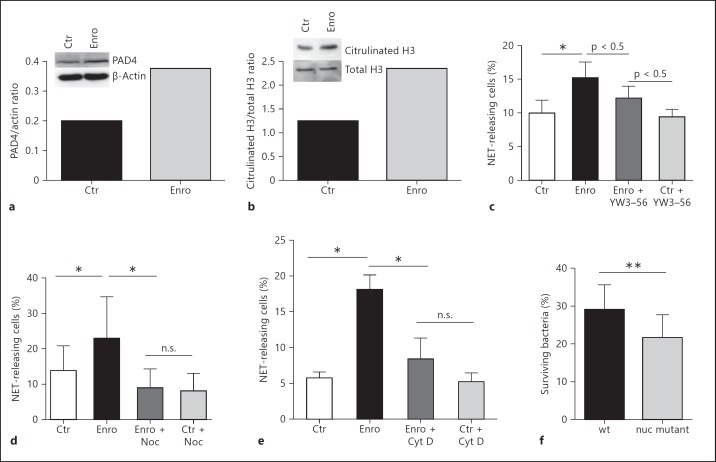Fig. 2.
Biochemical mechanisms associated with the enrofloxacin-induced formation of NETs. Bovine granulocytes were treated with 10 µg/ml enrofloxacin for 2 h. a Effect of enrofloxacin on PAD4 protein expression as analyzed by Western Blot. b Effect of enrofloxacin on histone H3 citrullination as analyzed by Western Blot. The results from pooled granulocytes derived from 3 individual animals are shown. c Effect of PAD4 inhibition with 8 µM YW3-56 on enrofloxacin-mediated NET formation in bovine granulocytes. The results of 12 images from 2 independent experiments are shown. Effect of nocodazole (Noc) (d) and cytochalasin D (Cyt D) (e) on enrofloxacin-mediated NET formation in bovine granulocytes. The results of 3 independent experiments with 5 images each are shown. f Impact of enrofloxacin-mediated NET formation on antimicrobial activity against MRSA (4 independent experiments); the antimicrobial effect was measured by quantifying the surviving colony-forming units of the MRSA strain USA 300 LAC wild type (wt) and its respective NET-susceptible nuc mutant. Data are presented as percentages of surviving bacteria in the presence of granulocytes treated with enrofloxacin compared to surviving bacteria in the presence of granulocytes treated with NaOH (100%). All results were analyzed using a paired (d-f) or unpaired (c) one-tailed t test. n.s. = Not significant; * p < 0.05 and ** p < 0.005.

